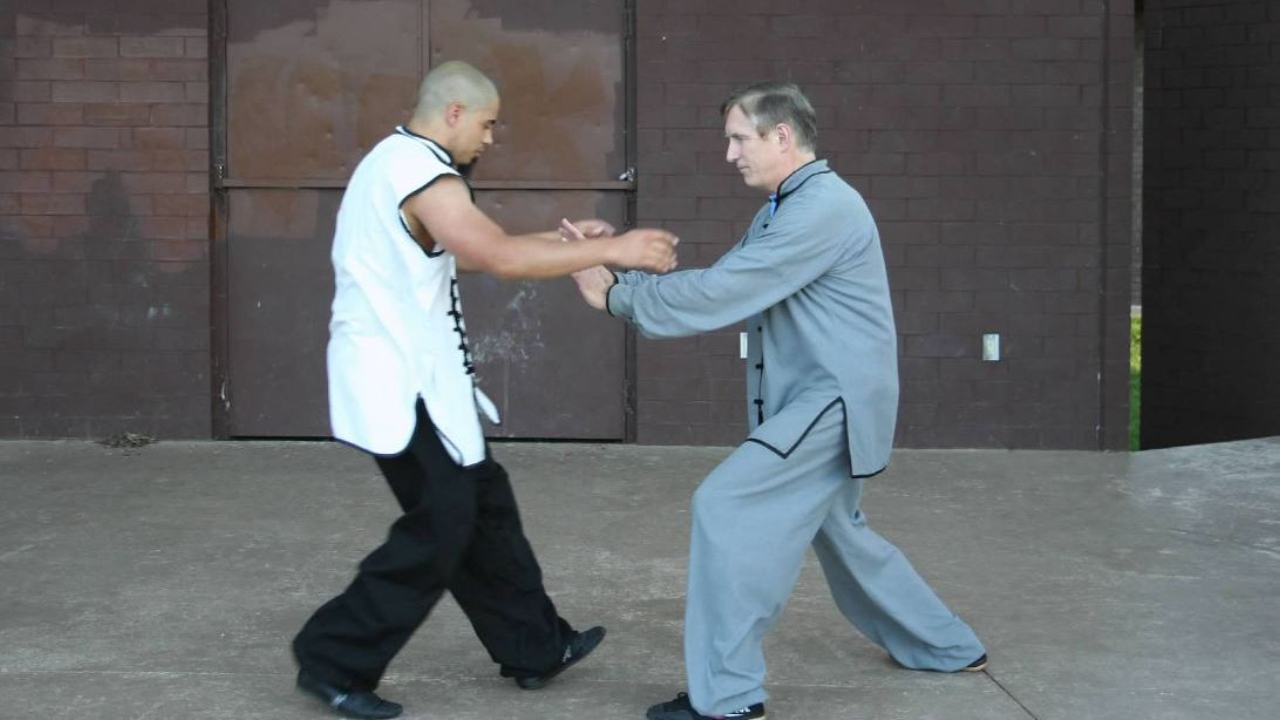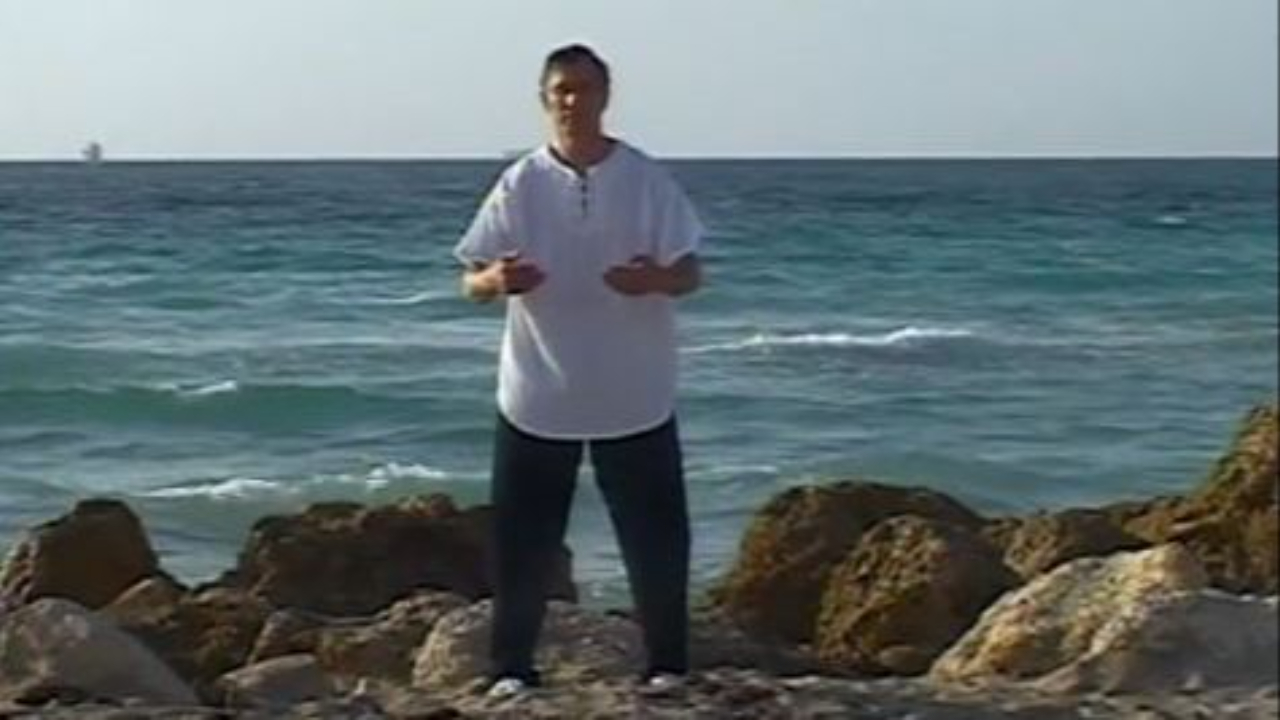Martial Artists - Are You Making This Mistake with Your Body Mechanics?

Martial artists with any experience at all believe they're generating a lot of power with their movements. In my first kung-fu class as a student--way back in September, 1973--we stood and punched, snapping our hips with the punch to add power to the technique.
As I've studied and taught the internal arts, I had to learn body mechanics that are very different from the other kung-fu, taekwondo, and boxing instruction I had received in the past.
A little over a week ago, I held a workshop for all martial artists on the fighting applications of the Chen Tai Chi 38 form. Attendees included students and teachers from a wide variety of arts, from Shaolin and taekwondo to a Yang style teacher. There were white belt students and very high-ranking black belts.
And almost every one of them made one mistake. I knew they would, because everywhere I go--every martial artist I meet--makes this mistake.
Their movements are not connected from the ground through the body.
Here are some photos ...
The Biggest Problem Facing the Martial Art of Tai Chi

I stopped at a Border's bookstore the other day and looked for the latest issues of my favorite martial arts magazines.
There in the Sports section, I found Black Belt and Kung Fu Tai Chi among the MMA and wrestling and karate and TKD magazines. I thumbed through the magazines to find the latest issue of T'ai Chi magazine but it was nowhere to be found.
And then I had an idea. I went to a different part of the magazine section where all the psychic, spiritual, religious and strange publications are. Sure enough, mixed in with all of this stuff was T'ai Chi magazine.
And there you have it -- the biggest problem facing the art of Tai Chi Chuan. Even a bookstore chain doesn't recognize it as a martial art, and places it with in its mystical and supernatural section.
I'm going to begin a little campaign to get Border's to put the magazine where it belongs -- in the martial art section. You can help by talking with the manager at each store you visit and request that it be moved.
Tai ...
Tai Chi Self-Defense Workshop was a Lot of Fun

At least 17 people showed up for my workshop yesterday at John Morrow's Academy in downtown Moline, Illinois. Martial artists from all styles were there -- TKD, karate, another tai chi instructor (Yang style), Shaolin students -- it was a great group of very nice people.
Two members of the online school drove in from Dixon, Illinois and another member, Wally, drove in from Chicago.
We went over fighting applications from the Chen 38 form. Each of the participants will receive a DVD -- Nancy videotaped it for the Chen 38 DVD that's due out in the next two weeks.
I knew I was going to enjoy showing internal body mechanics to a variety of martial artists. It was a blast showing them fighting applications from tai chi, and the relaxed power you can generate from the proper body mechanics.
One of the hallmarks of "external" styles is the twisting of the hips. Many martial artists twist their hips too much when they move, and they kink their posture and put themselves into vulnerable po...
Which is Better for Self-Defense -- Xingyi or Taiji?

Gary Liu asked this question:
"I have been learning Chen Taiji for just over 2 years. One of the things that frustrates me is the seemingly unrealistic techniques and chin-na that would be unrealistic for self-defence. Felt like a waste of time covering and learning them. I have always looked for simple techniques and doing them well for self-defence purposes.
After reading your post here about practicing the concepts behind them, things fall into perspective a lot more. Instead of a chore, chin-na becomes an opportunity to learn to send force into the opponent to control his body (as opposed to control of a local joint).
The Cannon Fist routine was a lot more direct and aligns more with what I am looking for (I have learned short yilu and erlu forms - now learning a long yilu form). Though looking at your Hsing-I instructions, I wonder if I should be giving Hsing-I a go due to more direct and simple movements.
If you have time, I would be very interested in hearing your view on Hs...
Getting Back to the Basics of Internal Strength

Last night at practice, some students and I went over basic ground strength exercises from the Internal Strength DVD. These are among the first things that my students learn, both in my classes and in the online school.
It was good to revisit these exercises. If you're doing the internal arts such as Tai Chi, Bagua, or Hsing-I, and you haven't been taught how to establish and maintain the ground path and peng jin throughout all of your movements--even while walking--then you're not really doing the internal arts, you're just moving in a way that looks like the internal arts. Unfortunately, most of the tai chi folks I meet around the country are just moving around. When you push on them they collapse. It's easy to see that there is no peng, no ground, no silk-reeling going on in their movement.
The development of internal strength gives you the iron inside the cotton, but it takes practice and someone to show you how it's done.
In the photos here, I show one of the exercises that we ...
What it Takes to Succeed in Martial Arts

On Saturday, Alex drove three hours from Milwaukee for a private lesson (pictured above). We worked in my basement for three hours and then he drove home. A 9-hour day for Alex. In the photo at left, I'm working with him on establishing and maintaining the ground connection--step one in learning the internal arts. We went through several of these exercises, plus peng jin, silk-reeling and whole-body movement. It was a lot of fun and I could tell he learned a lot.
I admire someone who does this. Alex has been a member of the online school, and he had the Internal Strength DVD, but he wanted to understand it better so he spent a day traveling to my home for some hands-on training and correction.
This is what it takes to succeed, and I admire someone who goes to that kind of time and effort.
It isn't easy finding good teachers to study Tai Chi with, and that's why--in 1998--I began making a 4-hour round trip to study on a regular basis (sometimes twice a week) ...
A Sneaky Technique for Unbalancing an Attacker

On Saturday, we practiced various techniques for unbalancing an attacker. Some were very subtle and will be covered in future posts and videos.
Here's the concept -- you take your opponent in the direction he wants to go. You can help the process along by making slight adjustments and adapting to the way he moves so that you can take advantage of they way he is moving.
Sometimes it only takes a push on his calf with your shin to make his rear shoulder turn every so slightly -- but enough for you to grab and help the shoulder continue moving in that direction, causing your attacker to lose balance even more and hit the ground.
In the photos here, Leander Mohs is attacking Chris Miller. You see him step in with a punch. Chris deflects the punch and puts his right foot behind Leander's left foot and slides it back toward him. This unexpected move causes Leander to lose balance and he turns, trying not to fall on his back. The result puts him in a vulnerable position and Chris c...
Congratulations on Promotions for Chris Miller and Kim Kruse

Congratulations to Chris Miller and Kim Kruse on successfully promoting to the next level in our kung-fu system of internal arts.
Chris Miller has studied for more than three years and is now second degree brown sash. He is two tests away from black sash. During the brown sash levels, he is studying the basics of baguazhang.
Kim Kruse was promoted to blue sash, in the intermediate studies that focus on the basics of Chen tai chi. She has learned the Chen 19 form and is currently working on the Chen 38, push hands, and other parts of the curriculum. After this level, she will reach purple sash and study the Chen broadsword form and other material.
In the system I teach, students learn the basics of Hsing-I in the first three levels, Chen Tai Chi in the intermediate levels, and Bagua in the advanced levels. At black sash, you study more advanced forms and techniques in each of the three arts.
By the time a student reaches black sash, he or she has also learned forms and fighting w...
The Best Goal for an Internal Martial Artist - Finding Your Center

Most religions and philosophies teach harmony -- or, at least they pretend to teach it.
Finding your "center" is an important part of the internal arts. Some of the finest masters of Tai Chi, Bagua, and Hsing-I such as Chen Fake, Sun Lu Tang, Liu Bin and others were known not only for their martial skill, but also for their fine character. It's a trait of people who reach the highest level of the internal arts.
When you look at the people around you day-to-day, you can see that most people desperately want it--need it--and try to find it--but life's challenges, along with the attitudes of other people get in the way. Instead of balancing you, the events and news during a day can unbalance you mentally.
Look at what's happening in Washington these days. There is a complete lack of cooperation and goodwill between the two parties as the American people, other nations, and the environment are facing the most major challenges in our lifetimes. It seems that our politicians, particularly...
Chen Xiaowang Performing Straight Sword Form in 1985

When Chen Xiaowang was a young man, he had game. My favorite Taiji performance of all time was a demo he did in Texas in 1988 during his first visit to the U.S. This is a demo he did three years earlier, in 1985 with the sword form.
